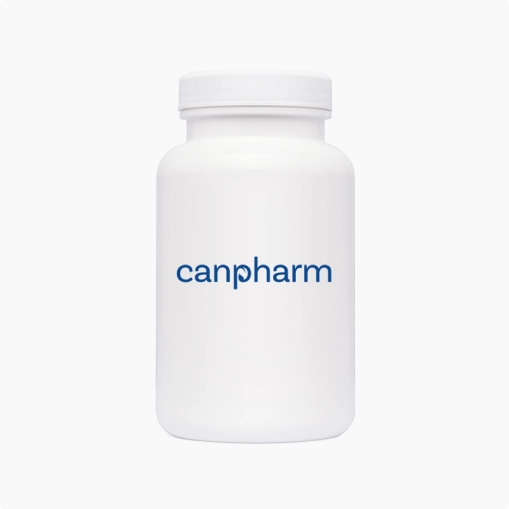
Calcipotriol (Calcipotriene)
Out of stock
We will notify you as soon as it becomes available.
-
Description
-
Related Products
-
Related Conditions
Calcipotriol is a psoriasis treatment medication available by prescription and used for relief of the red and scaly skin patches that occur with psoriasis. Calcipotriene is a synthetic Vitamin D3 derivative that relieves psoriasis by inhibiting the massive cell reproduction that allows psoriasis plaques to develop and grow. Calcipotriol is effective as a psoriasis treatment but be aware that it can take up to 8 weeks (about 2 months) to see full results with psoriasis relief when using this medication. Buy Calcipotriol ointment from Canada and Canpharm and get the best price on it.
What is Psoriasis?
Psoriasis is a chronic autoimmune condition where excessive cell growth in the skin causes rashes with itchy, scaly patches that most commonly appear on the knees, scalp, trunk, and elbows. Sufferers will have psoriasis flare-ups where they have the condition become worse and then it will become milder until the next flare-up occurs. There are seven different types of psoriasis, but the most common one is plaque psoriasis with estimates that 8 out of every 10 psoriasis sufferers have plaque psoriasis.
Directions
Standard dosage for Calcipotriol cream is to apply 2x daily
Wash hands before applying a thin layer of cream to the skin area requiring treatment for psoriasis
Rub the cream into the skin until fully absorbed
Wash your hands after applying
Ingredients
The active ingredient in Calcipotriol is Calcipotriene
Cautions
Calcipotriol is approved for ages 12 and up
Let your doctor know if you have any history of hypercalcemia (high blood calcium levels) or overly high Vitamin D levels before starting on Calcipotriol
Use of medication may not be suitable for psoriasis patients receiving phototherapy treatments
This medication increases sensitivity to sunlight (photosensitivity), and it is best to use sun protection on treated areas if you are going to be spending prolonged time in the sun during treatment
Women who are pregnant or breastfeeding should only use this medication if approved by their doctor
Interactions
Negative drug interactions may occur between Calcipotriol and other Rx and OTC (Over the counter) medications, including celecoxib, ubiquinone, duloxetine, fluticasone, adalimumab, pregabalin, metoprolol, esomeprazole, apremilast, acetaminophen, cyanocobalamin, cholecalciferol, diclofenac, bupropion and alprazolam. Let your doctor know of all medications you are currently taking before getting a prescription and proceeding to buy Calcipotriol online.
Side Effects
Calcipotriol side effects may occur, and some users may experience skin irritation, rash, or itching. If side effects are experienced, you may want to stop use and meet with an overweight doctor again to discuss plaque psoriasis treatment alternatives.
Remember, these are not exhaustive lists, and it's important to consult with a healthcare professional for personalized advice and guidance. If you prefer, you may contact the U.S. Food and Drug Administration (FDA) directly. Visit www.fda.gov/MedWatch or call 1-800-FDA-1088
Frequently Asked Questions about Calcipotriol (Calcipotriene)
What is Calcipotriol (Calcipotriene)?
Calcipotriol, also known as calcipotriene, is a synthetic form of vitamin D3. It is used topically to treat psoriasis by slowing down the growth of skin cells.
How is Calcipotriol applied?
Calcipotriol is typically applied as a cream, ointment, or solution to the affected areas of the skin. Follow your doctor's instructions on the application method and frequency.
How does Calcipotriol work in treating psoriasis?
Calcipotriol helps normalize the growth of skin cells and reduces inflammation, which is beneficial in managing the symptoms of psoriasis.
Can Calcipotriol be used for other skin conditions?
Calcipotriol is primarily indicated for psoriasis. Its use for other skin conditions should be discussed with a healthcare professional.
Are there common side effects of Calcipotriol?
Side effects may include skin irritation, redness, or itching at the application site. Consult your doctor if these symptoms persist or worsen.
Can Calcipotriol be used during pregnancy or while breastfeeding?
Inform your healthcare provider if you are pregnant or breastfeeding. The decision to use Calcipotriol will depend on the potential benefits and risks in your specific situation.
How long does it take for Calcipotriol to show results?
The response to Calcipotriol can vary. Improvement in psoriasis symptoms may be noticeable after a few weeks of regular use.
Can Calcipotriol interact with other medications?
Inform your healthcare provider about all medications, including topical products and supplements, to avoid potential interactions.
Can I expose treated skin to sunlight while using Calcipotriol?
While sunlight can benefit psoriasis, excessive exposure may increase the risk of side effects. Discuss sun exposure with your doctor.
What should I do if I miss a dose of Calcipotriol?
If you miss a dose, apply it as soon as you remember. However, if it's almost time for your next dose, skip the missed one and continue with your regular schedule.
